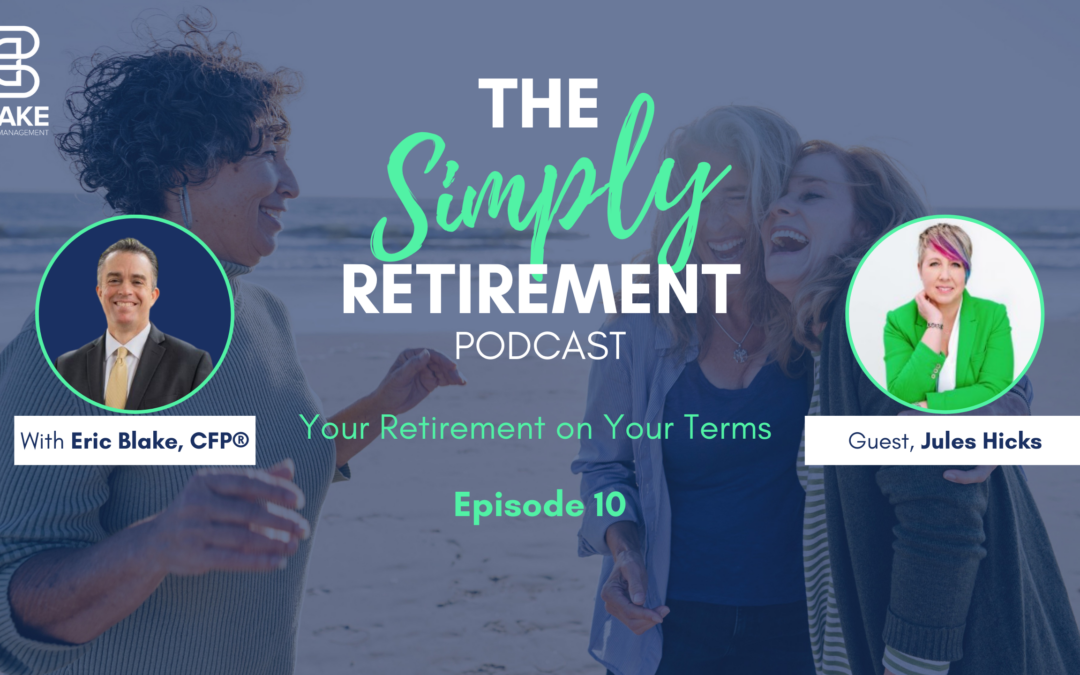Most people worry about not having enough money for retirement. But did you also know that there is such a thing as having too much money? Too much money may not necessarily be a bad thing, but it may mean you need to worry about required minimum distributions (RMDs).
What Should You Know About RMDs?
RMDs Depend on Your Age
The main point of RMDs is to prevent retirement money from staying tax-free forever. The government gave a temporary tax break to encourage you to save for retirement, but it still wants that tax money. A required minimum distribution is a required withdrawal from your retirement account. It counts in your taxable income just like any other withdrawal in retirement.
Currently, RMDs start when you hit age 72 (or 70½ if you turned 70½ before January 1, 2020) and they are calculated to empty your retirement account within your calculated life expectancy. ¹ Each year, you need to withdraw a certain percentage of your account with the percentage going up as you age. However, it's important to realize that you do not have to spend all the money from these withdrawals. You can choose to reinvest these dollars somewhere else such as taxable investment account.
How are RMDs Calculated?
A required minimum distribution, or RMD, is a minimum amount of money one must withdraw from their IRA each calendar year after reaching a specific age. ²
The amount of a required minimum distribution is calculated by dividing the following two values from one another: ²
- The total account balance of an IRA in the previous calendar year, divided by
- A value, determined by the IRS’s “Uniform Lifetime Table.”
The final amount is the minimum amount that must be withdrawn. ²
Not Taking the RMD Can Mean Big Penalties
Thinking about skipping RMDs to avoid taxes? Think again. Not only do you still have to pay the taxes on the RMD amount, but a failure to withdraw an RMD can result in a 50 percent tax penalty. ² (related article: 4 Year Long Tax Tips for Retirees)
For example, if you were supposed to withdraw $10,000 but didn't, the IRS will charge you an extra $5,000. The penalty repeats every year until you catch up on your RMDs from previous years.
RMDs Can Throw a Wrench in Your Tax Planning
There are many reasons why you might want to reduce your taxable income in retirement. These can include qualifying for things like Medicaid subsidies, avoiding taxes on your Social Security benefits, trying to stay in a lower capital gains tax bracket, or just wanting to pay fewer taxes. (related article: Modified Adjusted Gross Income (MAGI)? What Is It and How To Reduce It)
Required minimum distributions can throw a major wrench in your tax planning because not only are they not avoidable, but they can also suddenly increase if the market surges. If you're using a tax strategy that requires reducing your income to a certain level, it's important to build in flexibility for your RMDs.
With Planning, RMDs Can Be Reduced
There are still ways to reduce or even avoid RMDs altogether. The main idea is to get the money out of your retirement account when you want to and not when the IRS wants you to.
One method is to make extra withdrawals at the end of the year. In December, you can estimate your taxes for the year. If you still have room in a lower tax bracket or below the income you need to stay under, you can withdraw additional money. When next year's RMDs are calculated, they will be on a lower account balance.
You can also convert to a Roth IRA instead of taxing the money out of a tax-advantaged account. Roth IRAs don't have RMDs because the money has already been taxed. When you make the conversion, you pay ordinary income tax rates on the amount you converted. There are no penalties even if you do the conversion before you turn 59 1/2.
If you have charitable intentions, you may also want to consider Qualified Charitable Distributions (QCDs). Generally, a qualified charitable distribution is an otherwise taxable distribution from an IRA (other than an ongoing SEP or SIMPLE IRA) owned by an individual who is age 70½ or over that is paid directly from the IRA to a qualified charity. ³ The maximum annual exclusion for QCDs is $100,000. ⁴
Retirement Plans Affected by RMDs
The following retirement plans will be affected by the new RMD requirements: ¹
- Traditional IRAs
- SEP IRAs
- SIMPLE IRAs
- 401(k) plans
- 403(b) plans
- 457(b) plans
- Profit-sharing plans
- Other defined contribution plans
As a reminder, Roth IRAs do not follow RMD rules. ¹
Important Changes to RMDs in 2021 and 2022
The CARES and SECURES Acts offered financial relief during COVID-19. And though some of the benefits of these acts are no longer in effect, some of the rules within them were enacted as permanent changes in 2021.
Keep in mind that RMDs can be incredibly costly if processed incorrectly. Therefore, the information in this article should not serve as a substitute for personal financial advice. Always contact your financial advisor before making any changes to your own finances.
RMDs have changed in a few ways in 2021. As noted previously, following the SECURE Act, the required age of RMDs increased from 70 and a half to 72 in 2020.³ If you will be turning 72 in 2021, and this is your first RMD, then you will have until April 1, 2022, to make your minimum withdrawal instead of the standard date of December 31 of each year. Additionally, the CARES act waiver no longer applies to 2021, meaning RMDs must be taken by the end of the year to avoid the 50 percent tax penalty.
RMDs for Inherited IRAs
When an IRA is inherited, the inheritor becomes a beneficiary and may still need to take RMDs. ³ However, how these RMDs are processed will depend on the date of the original account owner’s passing and the type of beneficiary receiving the account. ⁵
The type of beneficiary depends on multiple factors, such as relationship to the original account owner and state of residence. ⁵ Though, in general, spouses and other eligible beneficiaries may be allowed to take RMDs over their lifetime, while other beneficiaries will need to follow the 10-year rule, withdrawing the entire account within 10 years. ⁶
Of course, this is a general approach and alternatives do exist. Therefore, beneficiary type and RMDs should be determined by an advisor or other financial professionals before any actions are taken.
New Life Expectancy Tables Begin in 2022
The IRS publishes tables in Publication 590-B that are used to help calculate RMDs. To determine the amount of a required distribution, you would divide your account balance as of December 31 of the previous year by the appropriate age-related factor in one of three available tables.
Recognizing that life expectancies have increased, the IRS has issued new tables designed to help investors stretch their retirement savings over a longer period of time. These new tables will take effect for RMDs beginning in 2022. Retirees may be pleased to learn that calculations will typically result in lower annual RMD amounts and potentially lower income tax obligations as a result. The old tables still apply to 2021 distributions, even if they're postponed until 2022.
For more information on RMDs, consider speaking with your financial and tax professionals.
Tax Planning for Retirement in 2022:
The Good, The Bad and The Ugly.
If you are retired or plan to retire soon, it is very likely that taxes could be your largest expense during your retirement years.
Don't wait until retirement.. don't even wait until tax time. The time to start your tax planning is now.
How do you reduce your lifetime tax liability? Start as soon as possible.
December 9th at 12:00pm Central and 6:00pm Central
LEARN MORE
More Retirement Insights from Blake Wealth Management
-
https://www.irs.gov/retirement-plans/plan-participant-employee/retirement-topics-required-minimum-distributions-rmds
-
https://www.irs.gov/retirement-plans/plan-participant-employee/retirement-topics-required-minimum-distributions-rmds
-
https://www.irs.gov/retirement-plans/retirement-plans-faqs-regarding-iras-distributions-withdrawals
-
https://www.irs.gov/publications/p590b
-
https://investornews.vanguard/rmds-are-back-for-2021-what-you-need-to-know/
-
https://www.cpajournal.com/2021/04/21/untangling-the-inherited-ira-rules-part-ii/












